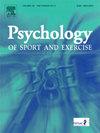Mental health challenges in elite sports, barriers to treatment, and quality of psychiatric care at an elite sports-centered mental health clinic—a mixed-methods study
IF 3.1
2区 心理学
Q2 HOSPITALITY, LEISURE, SPORT & TOURISM
引用次数: 0
Abstract
In elite sport, athletes and staff may face unique personal- and sports-related stressors that can both bolster and undermine their mental health. Meanwhile, toughness, perfectionism, stigma, and unwanted attention can serve as exacerbating factors and help-seeking deterrents. Two outpatient psychiatric clinics specializing in elite sport and health have been established in Sweden, including one in Malmö, to provide tailored-clinical care, narrow the patient-clinician gap, and foster greater acceptance for mental health care in sport. This population's full journey from first developing symptoms to seeking and receiving treatment in this unique context has not been previously described. This study aimed to characterize this population through a retrospective medical record review (n = 96, Study 1) and explore patient experiences with mental health, help-seeking, and the quality of care at the Malmö clinic through semi-structured interviews (n = 15 athletes and staff, Study 2). The majority of Study 1's sample were female (71 %) and identified as actively competing athletes at admission (87 %). Stress-related and somatoform disorders (53 %) were most common, followed by affective (18 %) and behavioral disorders (16 %). Participants described how their mental health was shaped and expressed through internal, external, and sport-culture-specific causes, factors, and outcomes, while barriers and facilitators to seeking treatment included perceptions of mental health, logistical aspects, and the role of support networks. Overall, participants were satisfied with the care they received, identifying strengths and limitations related to treatment approach, access, and availability. Implications and future directions are discussed.
在以精英运动员为中心的精神健康诊所中,精英运动员的精神健康挑战、治疗障碍和精神护理质量——一项混合方法研究
在精英运动中,运动员和工作人员可能会面临独特的个人和运动相关的压力源,这些压力源既可以促进也可以破坏他们的心理健康。与此同时,强硬、完美主义、耻辱和不必要的关注会成为恶化因素和寻求帮助的阻碍。在瑞典建立了两家专门从事精英运动和健康的精神病门诊诊所,其中一家位于Malmö,以提供量身定制的临床护理,缩小患者与临床医生之间的差距,并促进人们更广泛地接受体育运动中的精神卫生保健。在这一独特的背景下,这一人群从最初出现症状到寻求和接受治疗的整个过程以前没有被描述过。本研究旨在通过回顾性医疗记录回顾(n = 96,研究1)来描述这一人群的特征,并通过半结构化访谈(n = 15运动员和工作人员,研究2)来探索Malmö诊所的心理健康、寻求帮助和护理质量方面的患者经历。研究1的大多数样本是女性(71%),入院时被确定为积极参加比赛的运动员(87%)。最常见的是压力相关和躯体形式障碍(53%),其次是情感障碍(18%)和行为障碍(16%)。参与者描述了他们的心理健康是如何通过内部、外部和体育文化特定的原因、因素和结果形成和表达的,而寻求治疗的障碍和促进因素包括对心理健康的看法、后勤方面和支持网络的作用。总体而言,参与者对他们接受的护理感到满意,确定了与治疗方法、可及性和可用性相关的优势和局限性。讨论了影响和未来的发展方向。
本文章由计算机程序翻译,如有差异,请以英文原文为准。
求助全文
约1分钟内获得全文
求助全文
来源期刊
CiteScore
6.40
自引率
5.90%
发文量
172
审稿时长
69 days
期刊介绍:
Psychology of Sport and Exercise is an international forum for scholarly reports in the psychology of sport and exercise, broadly defined. The journal is open to the use of diverse methodological approaches. Manuscripts that will be considered for publication will present results from high quality empirical research, systematic reviews, meta-analyses, commentaries concerning already published PSE papers or topics of general interest for PSE readers, protocol papers for trials, and reports of professional practice (which will need to demonstrate academic rigour and go beyond mere description). The CONSORT guidelines consort-statement need to be followed for protocol papers for trials; authors should present a flow diagramme and attach with their cover letter the CONSORT checklist. For meta-analysis, the PRISMA prisma-statement guidelines should be followed; authors should present a flow diagramme and attach with their cover letter the PRISMA checklist. For systematic reviews it is recommended that the PRISMA guidelines are followed, although it is not compulsory. Authors interested in submitting replications of published studies need to contact the Editors-in-Chief before they start their replication. We are not interested in manuscripts that aim to test the psychometric properties of an existing scale from English to another language, unless new validation methods are used which address previously unanswered research questions.

 求助内容:
求助内容: 应助结果提醒方式:
应助结果提醒方式:


